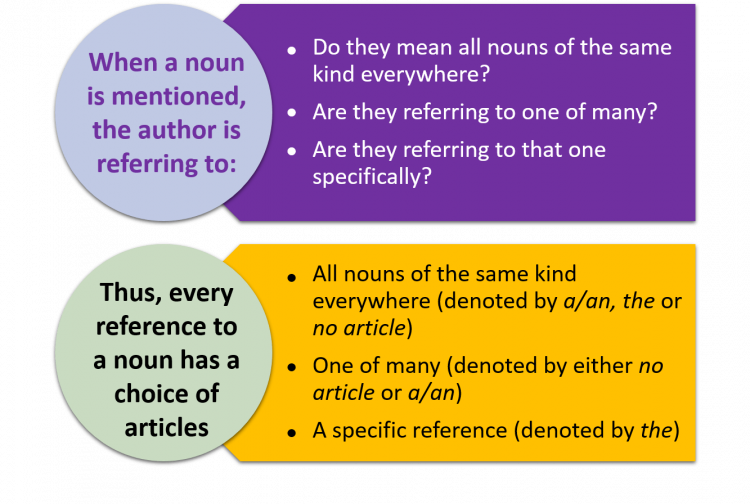Articles operate as limiting adjectives that help us recognize which person, place, thing, or idea is being discussed. Notwithstanding their apparent simple rules, articles are difficult to master for non-native English speakers. There are several reasons for this. Some languages do not have an explicit article system, e.g., Russian, Japanese, and Chinese. Or, even if the language has one, it is not equivalent to the English article system. Icelandic, for example, has thirteen definite articles which are all suffixes; German and Spanish use articles based on the number, gender, and case of the noun. For native speakers of English, article use evolves over time because of daily conversations in a variety of social contexts, reading, and observation.
Using the English article correctly is considered one of the most challenging aspects of the English language. In formal writing, article usage can be fairly idiosyncratic, and when writing manuscripts, one has to be especially aware of the context of usage. In this piece, we will methodically categorize article usage in formal writing.
In most cases, the correct article to be utilized can be decided by asking these simple questions:

The initial step is to find out if the noun is a common noun or a proper noun. In the case of a common noun, it is vital to identify whether the reference is specific or generic. Generic references would indicate that a noun represents all examples without mentioning a particular category (e.g., policies vs. economic policies). Specific references would include introducing a common noun in a text for the first time and then using the definite article in subsequent references (e.g., … was packed in a cartridge vs. …the cartridge was pretreated). Article usage may then differ with the context.
Using Definite Articles
Proper Noun
- The United Nations, established in 1945, is currently made up of 193 Member States.
- We study the psychometric properties of the Fear Avoidance Beliefs Questionnaire.
Contextual (specific) Reference
The method introduced in H1 yielded the exact outcome as the alternative method used in H2 (where the method has already been introduced; thus, it is a noun that has already been described and can be referred to using the definite article).
Using Indefinite Articles
If the noun that is defined or modified is one of several (i.e., an example or a single member of a group), the indefinite articles “a” or “an” must be used.
The Human Genome Project was an exciting development towards personalized medicine.
Article Usage with Countable and Uncountable Nouns
- If a noun is used as a representative of each instance or individual, its singular form can be utilized along with the definite article.
The Smartphone has become an inalienable part of modern existence.
The plural form can also be utilized for a generic reference. But, the definite article must be left out in this scenario.
Smartphones have become an inalienable part of modern existence.
- In English, mass nouns cannot be counted and mostly lack a plural form.
Wisdom is not a product of schooling but of the lifelong attempt to acquire it. (Albert Einstein)
Note!
- No article is used when a plural noun is introduced in the text. But, the definite article can be utilized to refer to that particular noun from the second instance onwards for clarity.
- Articles are generally omitted in titles and headlines for conciseness and directness.
Besides, if you are looking for an AI-driven writing tool to enhance your writing, then check out Trinka, the world’s first language enhancement tool that is custom-built for academic and technical writing. It has several exclusive features to make your manuscript ready for the global audience.


I am sure this paragraph has touched all the internet users, its really really
good article on building up new blog.